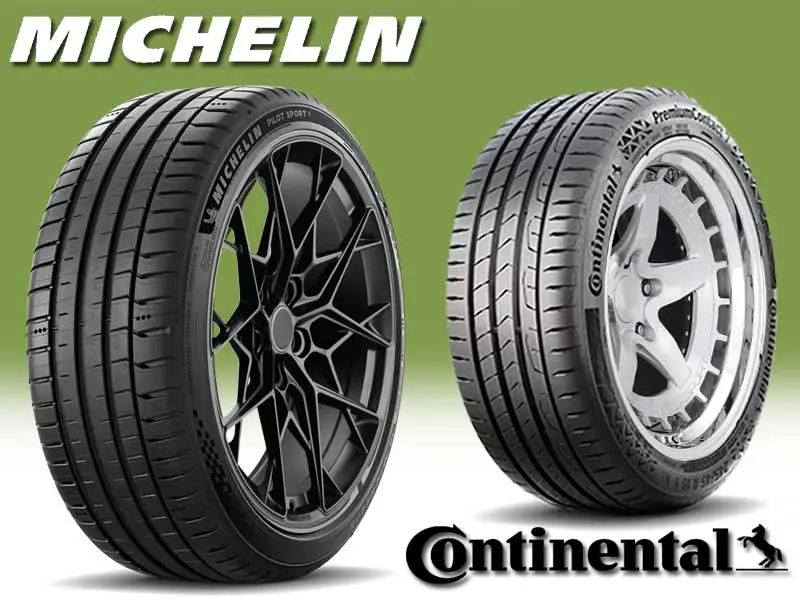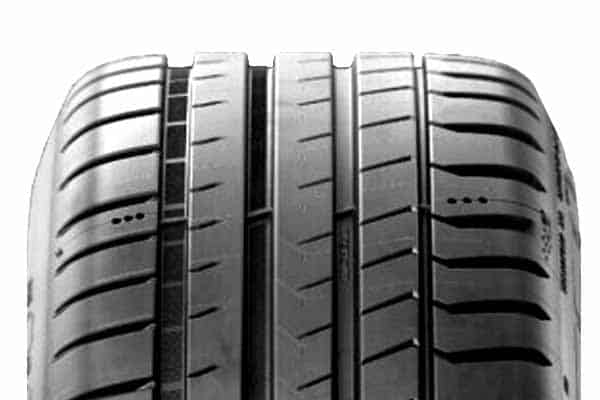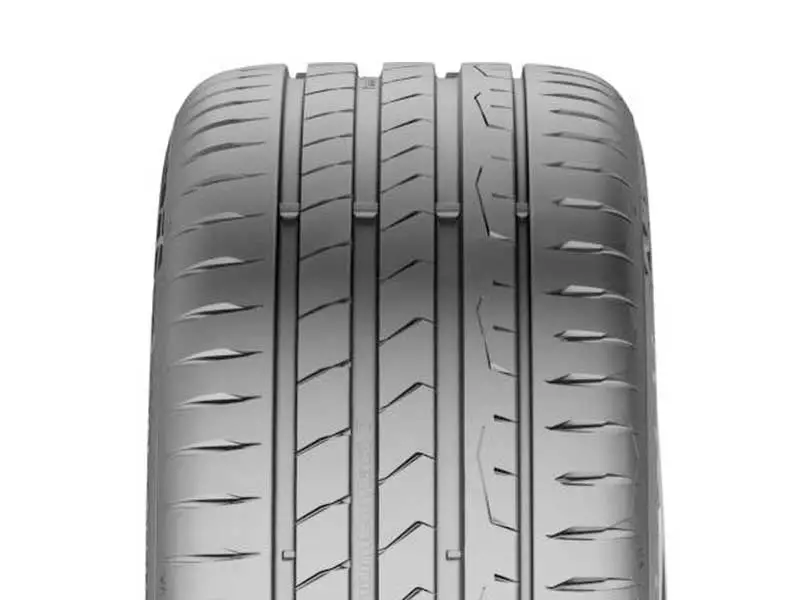Continental PremiumContact 7 vs Michelin Pilot Sport 5: As the sun blazes and the asphalt heats up, there’s no better time to explore the supremacy of Michelin’s summer tires, the Pilot Sport 5 and Primacy 4+. These powerful tires are for those who seek the thrill of performance and the luxury of a smooth ride. So let check into their unique characteristics and features to see which one is a better fit for you.
We are going to analyze their tread designs so that it can be explained how they performed next to each other, though first, let’s consider their sizes along with specs.

Examine the treads on these tires closely. They hold the key to knowing which to choose. In fact if you visit my "tread design" page, picking the right tire would never bother you.
| Specs | Michelin Pilot Sport 5 | Continental PremiumContact 7 |
|---|---|---|
| Sizes | 18 total sizes | 45 total sizes |
| Rim Sizes | 17 to 20 inches | 16 to 21 inches |
| Speed Ratings | Y only | V, Y, W, and H |
| Load Ratings | XL only | XL and SL |
| Tread Depth | 9/32″ | 8/32″ |
| Weight Range | 17 to 34 lbs | 15 to 30 lbs |
| Tread Mileage Rating | 30k miles warranty | No warranty |
Table of Contents
Tread Appearance
The Michelin Pilot Sport 5 showcases an asymmetric 5-rib tread design, intricately woven to create four distinct longitudinal grooves. While three of these grooves display uniform widths, the fourth reveals a notably narrower pattern (its the right most in the image).

The tread’s central ribs are unbroken and continuous running, as there aren’t any proper block formations there.
These ribs are characterized by diverse slanted incisions, presenting a distinct siping pattern. Each rib boasts unique lengths of these incisions, contributing to the tire’s distinct aesthetic and performance characteristics.
Moving towards the shoulder lugs, they stand out, showcasing the thickest of these “cuts” amongst all of the seen tread features.
Yet they still vary on each side of the tire.
On one side, the lugs form broad slits that taper, as they merge with the narrower longitudinal groove. Whereas, the lugs on the other side show up with relatively smaller, less aggressive voids, contributing to the tire’s asymmetric structure.
On the other side, the Continental PremiumContact 7 also comes out with an asymmetric tread design, displaying striking similarities to the Michelin Pilot Sport 5. It features three central ribs which form 4 longitudinal grooves, with one groove narrower than the other three.

Like the Pilot Sport 5, the ribs here also run continuously, as the lateral slits seen there are not full-depth.
Two of the ribs showcase a similar slit pattern, while the third rib carries a combination of smaller lateral cuts and longitudinal sipes.
Moving towards shoulders, they both form almost similar patterns on each side, forming most aggressive cuts of all.
Dry Performance
Dry traction can be divided into two primary components: grip and handling. Let’s talk about them both separately.
Dry Grip
Grip, also known as directional grip, is determined by the central area of the tread, as that part tells, how much contact the tire is able to make with the ground.
This is because, that area gets the most weight concentrations on it, when the tire rolls straight.
And considering that, it makes sense why out of both tires, the Continental PremiumContact 7 comes out with better overall efficacy, as it shows up with shorter braking distances (on average).
Braking distance is a direct measure of this grip, BTW.
The Michelin Pilot Sport 5 on the other side, can’t form enough contact with the road, so naturally here the grip isn’t able to outperform its counterpart.
Dry Handling
The overall handling of a tire, is reliant on its shoulders.
As the tire corners, its weight shifts to the extremities (of the tread), due to inertia. This weight distribution makes the shoulders a key factor in determining the tire’s handling capabilities, during turns.
That’s why it makes sense why the Continental PremiumContact 7, with its relatively bigger shoulders, provide superior lateral traction values (measure with g forces).
Moreover, the tire’s relatively lighter structure and tread depth also contribute to that. Both of these factors basically restrict excessive lug bending as the tire corners, allowing for better steering responsiveness, compared to Pilot Sport 5.
Wet Performance
Wet traction fundamentally involves two key aspects: the tire’s ability to grip in wet conditions and its resistance to hydroplaning. Lets talk later first.
Hydroplaning/Aquaplaning
In simple terms, hydroplaning is a situation where a tire loses contact with the road, and essentially glides or ‘floats’ on a layer of water, as it couldn’t get removed out of the grooves in time.
And out of all high performing summer tires, the Michelin Pilot Sport 5 features one of the best performance values.
This is because the tire comes out, with wider tread voids, and more tread depth (1/32″ greater), so more volume of water is evacuated at a given time.
Moreover, it’s relatively softer compound with greater silica composition, allow for superior negative pressure, facilitating quicker water expulsion capability.
These attributes combined enable the Pilot Sport 5 to maintain higher float speeds on both curved and straight roads (out testing show).
Wet Grip
While grooves channel majority of the water away from beneath the tire. The rest of the water is handled by the tire’s sipes.
And these sipes is from where, most of wet grip comes from, as they suck water particles in their slits.
In essence, these sipes create additional gripping edges and provide a temporary storage area for water particles so the rubber can effectively meet up with the road.
So it makes sense why the Continental PremiumContact 7 with greater number of sipes, get to offer shorter wet braking distances and handling times.
Fuel Consumption
Fuel efficiency and rolling resistance are directional proportional to each other. As they are affected by common factors such as weight, tread compound, and structure.
And looking at them, it can be seen why PremiumContact 7 exhibits slightly lower fuel efficiency, although the difference is minimal.
Basically the Pilot Sport 5 comes out with a more streamlined structure here, where its relatively more elastic tread compound restrict excessive movement or bending of the lugs, as the tire maneuvers.
Moreover, it also features relatively smaller number of biting edges, so its tread isn’t that sticking on the surface, as seen on Continental.
This explains why the PremiumContact 7 also comes out with greater speed ratings, as well. (Greater the speed ratings, greater the fuel usage).
Tread Life
The longevity of tire tread is primarily dictated by three critical factors, namely, rolling resistance, tread depth, and composition.
This is because, generally, tires with a greater tread depth exhibit a slower wear rate, while those made from stiffer compounds are more resistant to faster burning.
Having said that, it can be seen why Michelin Pilot Sport 5 stands out as a much better choice here. Like we have already discussed in the fuel section, the tire features smaller rolling resistance values, its rubber don’t burn off the surface with as much force.
Moreover, it’s stiffer compound combined with 1/32″ greater tread takes longer to reach down to replacement levels.
Tread Noise
Airflow is the main cause of noise generation.
Basically air particles collide with the walls of the tread, and create what they call, tread noise.
Now although Michelin Pilot Sport 5, isn’t necessarily a quieter tire here, it still does so much better compared to PremiumContact 7.
This is because the Continental’s tire generates a lot of in-groove resonance, even though both tires have almost similar tread voids, for air particles to hit on.
The groove resonance, simply put is the bouncing/reflecting of the sound-waves within the tread, and its seen more in the PremiumContact.
Nevertheless, the tire still does okay, when it comes to impact comfort. It’s greater siping allow for better lug maneuverability, and this allows for better bumps absorption capability.
Take Home Points
Let’s summarize everything we have discussed here (though its best if you don’t skip any of the above).
The Continental PremiumContact 7 outperforms its competitor when it comes to both dry and wet traction.
Though in Pilot Sport 5’s defense, its only by a tiny margin, and this tire features features superior resistance to hydroplaning, still.
Moreover, the Michelin’s tire also shows up with greater fuel economy and tread life too, as well as noise dampening abilities (even though its still not a very quiet tire).
However, the PremiumContact 7 still manages to offer better impact comfort due to its greater lug flexibility.
